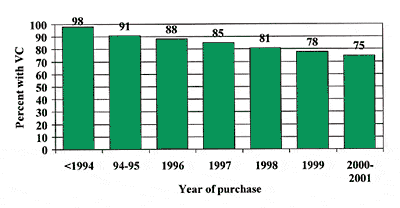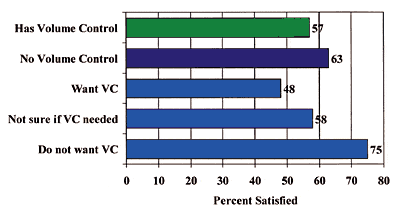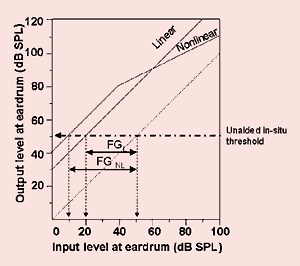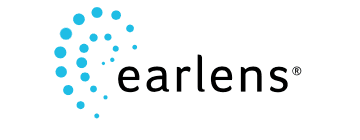Constant dollar prices for this historical sample of hearing aids resulted in a range from $244-$1,932, with an average price of $882. Thus, hearing aid prices during the first half of the 20th century were comparable to the field’s recent pricing history, a remarkable fact considering the changes in both technology and dispensing services.
Fifty-five percent of consumers believe that hearing aids are too expensive1 and the overwhelming majority believe that lower hearing aid prices are desirable.2 In contrast, industry analysts have long maintained that hearing aids are reasonably priced, and represent an excellent health care value.3
In the year 2000, the average cost of a hearing aid in the United States—when factoring in VA sales, as well as free, third-party payor, and discounted hearing aids—was $1,183.4 The present study was designed to put this cost in context by extracting manufacturers’ suggested retail prices (MSRP) from an archive of hearing aid information dating back to the early 1900’s, then converting these data to constant dollars.
Surveying Suggested Retail Prices
In 1970, Berger5 published an extensive archive of information on hearing aids dating back to the earliest record of manufactured instruments. Where possible, entries included information on the make, model, construction, features, size, weight, price, and year when the model was first sold. This listing was reviewed to identify all instruments for which a definite date and price were specified. The study sample was further restricted to include only electric hearing aids that were representative of the devices generally available to consumers. Non-electric devices and prototype instruments produced in very limited number were not included in the analysis. In total, 126 instruments were identified which met these criteria. Table 1 presents a summary of these instruments.
|
Date First Sold |
|||
| Instrument Type | n | Earliest | Latest |
| Carbon | 33 | 1908 | 1939 |
| Vacuum Tube | 53 | 1939 | 1953 |
| Transistor | 40 | 1953 | 1961 |
| Table 1. Summary of hearing aids whose price was analyzed in the present study. | |||
The original price of the hearing aid (ie, “Real Dollars” at that time) was converted to a value representing its cost had it been sold in the year 2000 (“Constant Dollars”) by applying factors based on the consumer price index. (CPI).6 For example, the CPI for the year 1920 is 20, and the CPI for 2000 is 172.2. Therefore, a product sold for $20 in 1920 would have a value of $172.20 in year 2000 dollars, and vice versa. In 1920, the Williams Articulator Co. sold a carbon hearing aid (model 100) for $120. Converting to Constant Dollars, this is the equivalent of $1,034 in the year 2000.

Manufacturer suggested retail prices (MSRP) for hearing aids culled from the Berger5 archives are plotted in Figure 1. The average carbon hearing aid sold for about $62. In the 1940s and 1950s, vacuum tube hearing aids sold for $108 on average. Through 1961, the average price of transistorized instruments was $159. Thus, in about 50 years, the MSRP of hearing aids increased over 150%.

Change in the buying power of the dollar due to inflation appears to be the major reason for the rise of hearing aid prices during the first half of the 20th century. This is apparent when MSRP is converted to constant dollars (ie, year 2000 equivalents). Figure 2 shows that the average price of these carbon, vacuum tube, and transistorized instruments is $757, $887, and $980, respectively. In constant dollar terms, this represents a change of less than 30%.

How do modern hearing aid prices compare with historical values? Figure 3 presents recent industry estimates of average hearing aid prices4 converted to constant dollars. The mean constant dollar price of the 126 hearing aids represented in Figure 2 is $882. The line labeled “Historical Mean” in Figure 3 denotes this value. The shaded area represents ±1 standard deviation around this mean. Clearly, modern hearing aid prices are well within the historical range.
Discussion
This review was designed to put hearing aid prices in a historical context. Archives were searched to find maufacturers’ suggested retail prices for a large sample of hearing aids marketed in years ranging from 1908 to 1961. These prices were converted to constant dollars referenced to the year 2000, and it was found that constant dollar prices for this historical sample of hearing aids ranged from $244 to $1,932, with an average price of $882. This is on par with hearing aid prices that are sold today; MarkeTrak statistics for 2000 show the average price of a hearing aid to be $1,183.
It should be pointed out that MSRPs are just that: manufacturer-suggested retail prices. Due to factors such as bundling and various business/marketing strategies among dispensing professionals throughout the decades, MSRPs are not always identical to the final price paid by consumers. In contrast, MarkeTrak statistics take into account the prices of all hearing aid sales to consumers—including VA sales, and free and discounted aids—as reported by consumers. Finally, the annual Hearing Review Dispenser Survey reveals the retail prices to consumers as reported by dispensing professionals, but this survey generally does not reflect government sales or free/discounted hearing aids. The HR Survey reported an average hearing aid sales price of $1,480 in 2000, and two-thirds (76%) of the respondents in the survey reported bundling their service fees in with the cost of the hearing aids.7 Although this price represents a $297 increase over MarkeTrak figures, it is surprising to see that it still falls within Berger’s MSRP historical norms, especially when considering the vast range of tests, services, etc, that have been added throughout the decades.
Without question, the rapid acceptance and popularity of higher-priced digital signal processing (DSP) hearing aids has increased average retail prices in recent years (ie, since the widespread introduction of DSP aids in 1996).8,9 Unfortunately, direct pricing comparisons between the technology transition periods (eg, carbon to vacuum tubes; vacuum tubes to transistors; transistors to analog IT circuits; and analog circuits to DSP circuits) are difficult to make; likewise, it may be spurious to conclude that each of these leaps to a new “technology platform” were comparable relative to the changes required in the manufacturing and/or dispensing process.
The observations made in this study indicate that, when the effects of inflation are accounted for, hearing aid prices have changed only slightly since the time of Alexander Graham Bell. This does not mean, however, that recent prices of hearing aids are appropriate—only that they are consistent with historical values. A majority of consumers believe that hearing aids are too expensive, and cost considerations are a significant barrier to many potential hearing aid consumers.1

|
Acknowledgement
Portions of this article were presented at a seminar during the 2003 American Speech Language Hearing Association (ASHA) Convention in Chicago.
Correspondence can be addressed to HR or Conrad Lundeen, PhD, West Virginia University, Dept of Speech Pathology and Audiology, 805 Allen Hall, PO Box 6122, Morgantown, WV 26506-6122; email: [email protected].
References
1. National Council on the Aging. The consequences of untreated hearing loss in older persons. Washington, DC: NCOA; 1999.
2. Kochkin S. MarkeTrak VI: Consumers rate improvements sought in hearing instruments. Hearing Review. 2002;9(11):18-22.
3. Radcliffe D, Mahon WJ. What price hearing aids? Hear Jour. 1983;36(1):7-11.
4. Kochkin S. MarkeTrak VI: The VA and direct mail sales spark growth in hearing aid market. Hearing Review. 2001;8(12):16-24,63-65.
5. Berger KW. The hearing aid: Its operation and development. Detroit: National Hearing Aid Society; 1970: 151-212.
6. US Dept of Labor, Bureau of Labor Statistics. Consumer price index. Washington, DC; 2003.
7. Strom KE. The HR 2000 Dispenser Survey. Hearing Review. 2001;8(6):28.
8. Strom KE. The HR 2004 Dispenser Survey. Hearing Review. 2004;11(6):58.
9. Hearing Industries Association. HIA Quarterly Statistical Report for the Fourth Quarter 2003; Washington, DC: HIA; 2004.




